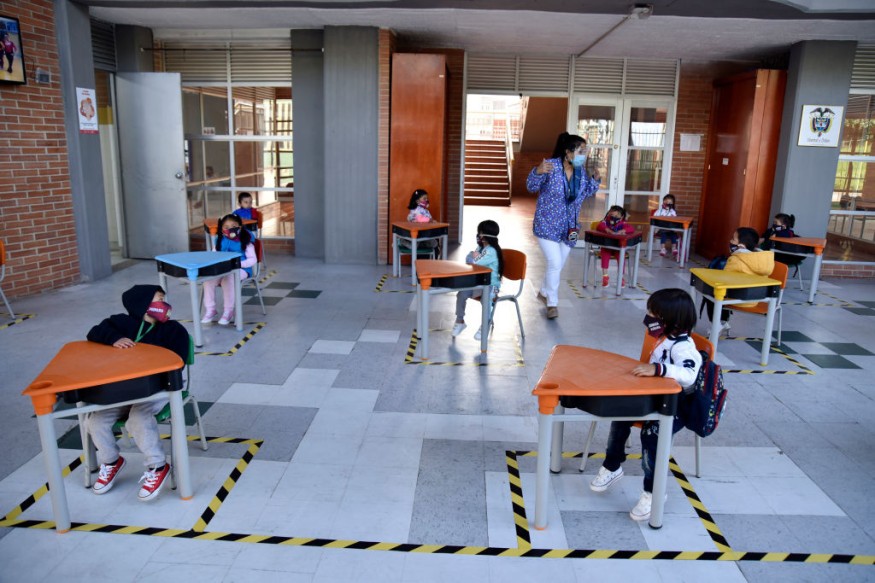A new University of Central Florida study showed a better way to stop COVID-19 that's far more vital than social distancing for the reduction of the airborne spread of coronavirus, specifically in classrooms.
The study entitled "Estimating COVID-19 exposure in a classroom setting: A comparison between mathematical and numerical models," and published in the Physics of Fluids journal, comes at a critical time when school, colleges, and universities are considering schools, colleges and universities are considering going back to more face-to-face or in-person classes in the fall.
A Phys.org report said, according to study co-author Michael Kinzel, assistant professor at the UCF's Department of Mechanical and Aerospace Engineering, this study is important as it provides guidance on the manner safety in indoor environments is being understood.
Kinzel explained, their study found that aerosol transmission routes are not showing a need for six-feet social distancing when wearing masks is mandated.
ALSO READ : Fully Vaccinated Individuals Safe to Meet Other People Indoors Even Without Masks, CDC Announces

How is COVID-19 Spread?
In October 2020, the Centers for Disease Control and Prevention said, COVID-19 is believed to spread mainly through contact from person to person including those who are physically close to each other within about a six-foot distance.
People infected with the virus but are asymptomatic can also transmit the virus to others. The same 2020 CDC information also said cases of reinfection have also been reported although they are rare. The agency added, health experts are still learning how COVID-19 spreads, not to mention the severity of the disease it causes.
How easily a virus is spreading from person to person can vary, the health agency explained. The virus that causes COVID-19, it elaborated, seems to spread more effectively compared to influenza although it is not as efficient as measles, which is among the most infectious viruses known to affect humans.
Benefits of Wearing Masks and Ventilation Systems
Masks are prone to have a benefit by averting direct exposure of aerosols, as they provide "a weak puff of warm air" that leads aerosols to vertically move, thereby preventing them from reaching adjacent school goers.
In addition, a ventilation system combined with a good air filter lessened the infection risk by 40 to 50 percent to a classroom that did not have ventilation.
This is due to the fact that the ventilation system is creating a steady current of airflow, circulating many of the aerosols into a filter that eliminates a portion of the aerosols compared to the scenario that did now have ventilation where the aerosols gather together above the peoples inside the classroom.
These findings validated the recent CDC guidelines that recommend reduction of social distancing in elementary schools from six to three feet when there is the universal use of mask, explained Kinzel.
The study author also said, if infection probabilities are compared when wearing masks, three feet of social distancing did not specify a rise in contagion probability relating to six feet, which may provide evidence for schools, as well as other businesses to operate safely through the rest of this global health crisis.
The researcher also said the study findings suggest what the CDC is currently doing, that ventilation systems and the use of masks are most essential for the prevention of transmission and that social distancing would be the first thing to ease.
Related information about wearing face masks is shown on NBC News's YouTube video below:
RELATED ARTICLE : It May Feel Uncomfortable, But Wearing Mask During Exercise Should Not Damage Oxygen Intake
Check out more news and information on COVID-19 on Science Times.









